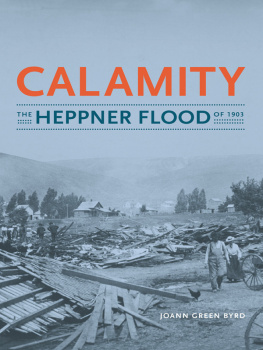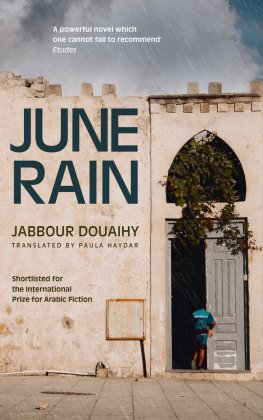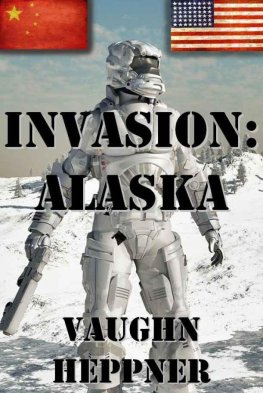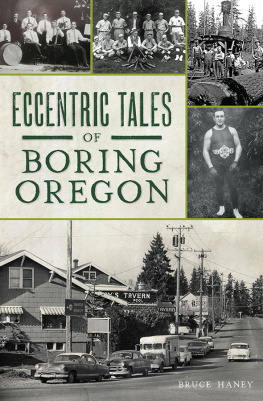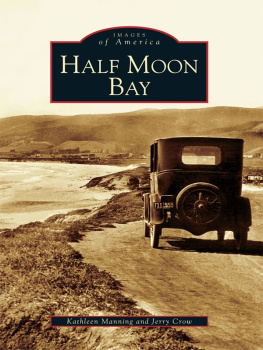Acknowledgments
THIS BOOK is the product of other people's goodwill, effort, and trust. The outpouring of support from my family and friends, sources, and even from strangers convinced me early-on that this story was going to be told; all I had to do was go where it led me.
Ever since the notion of writing a book popped into my head, my cousin Cliff Green has been my faithful facilitator, guide, and host. Cliff's enthusiasm overwhelmed his usual good judgment, and he offered to let me stay in his spare room in Heppner while I did my research. I shamelessly accepted that hospitality at least half the time for close to three years, and I receive his ready assistance and wise counsel to this day. Without Cliff's support, there would be no book.
My brother and sister-in-law, Bob and Tammy Green in Pendleton, made a similar mistake, and found me and my laptop and notebooks cluttering up their home many of the days that I wasn't at Cliff's for the same three years and beyond.
It is impossible to repay such gifts.
Others in my family have been unfailingly generous with time, expertise, histories, and suggestions. Margaret Green, MD, helped me understand the public health issues and medical problems that challenged survivors after the Flood. Marion and Marlys Green taught me the Heppner they'd lived in, and Steve Green, Tom Green, and Beverly McCaleb Tobias provided leads and valuable ideas.
Our aunt, Ruth Green McCaleb, and her husband Omer, were always available with information, records, experiences, and insight. They provided all of that after they had innocently instigated this project by showing me the Heppner Gazette-Times report of the Flood centennial observance in 2003. That news story was the catalyst for my flood-introduction trip to Heppner and the discovery of Mark Highberger's book, Days of Sorrow In Heppner.
Howard Bryant, my father's cousin, and his wife, Beth, were my first sources, and for four years they have been my steady champions. Together they hold the record for sitting still for my interviews, and they have repeatedly shared boxes of newspapers and decades of recollections and all the encouragement a person could want.
Kathryn Hoskins is one of the stalwarts of the Morrow County Historical Society and the daughter of Flood survivor Gertrude Crawford Parker. Kathryn found information, letters, and photos, and volunteered assistance again and again and again. Betty Carlson drove me on a tour of Lexington and Ione and provided background on the typhoid victims there.
Kit George, whose grandfather, Bert Sigsbee, took so many of the pictures in these pages, loaned me the contents of his photo trunk, and his wife, Shirley George, arranged handoffs and added more history and more hospitality. My friend Rich Frishman, photographer and artist extraordinaire, selected, restored, and edited the photos I received from Kit, the museum, and families, and tutored me in photographic storytelling. Pat Struthers of Heppner expertly scanned dozens of old pictures.
Judy Stanley, news artist at The Herald in Everett, Washington, created the maps, skillfully weaving in important elements of the story.
Bob Jones shared 1903 documents and a wealth of knowledge about Morrow County history and weather. Steven Gillispie and Marie Rose Wong are responsible for our knowledge of the Chinese men who worked and died in Heppner. Rev. Grace Drake compiled for me the flood references in the Bible and shared information on women's roles in early-day Oregon and her own Morrow County experiences. Sarah Little and Virginia Roberts unearthed volumes of information about the people who died inor survivedthe Flood.
David DeMayo, Heppner city manager, and Casey Beard, Morrow County emergency management director, each went out of his way to help. At the Morrow County Court House, I enjoyed the assistance of County Clerk Bobbi Childers, County Assessor Greg Sweek, Judge Terry Tallman, County Commissioner Ray Grace, and the entire staff of the circuit court who courteously let me into the basement vaults day after day and hiked back down to lock up behind me.
Heppner native Bob Bryant was an early, generous source. Pat Sweeny shared June 1903 San Francisco newspapers and rare photographs. I went to see Heppner native Francis Cox Griffin in Salem, Oregon, for an hour and spent a day going through her records, photos, and memorabilia. Lloyd Stiewig, Oregon grand master of IOOF, looked up and sent me the lodge records about the Flood. Tom Robinson of the Historic Photo Archive in Portland devoted days to locating and attempting to copy pictures he and I hoped would deepen this report. Virginia (George) Nairns connected me with her historic All-Saints Memorial Episcopal Church and with Willow Creek Terrace assisted living residents who actually lived local history.
Ray Waldon of WEST Consultants explained the engineering study his company did for a FEMA flood insurance review. Ken Hunziker, retired engineer, interpreted the 1903 USGS reports on the Flood after his son, Scott Hunziker, enlisted him to this cause. Dr. William Rense translated weather reports and maps and explained the storm that caused the Heppner Flood.
I acted like the Morrow County Museum in Heppner was my personal office every other week for three-plus years. This volunteer-operated facility is the treasury where I found the letters, records, and books, family files, photos, and microfilm that are the foundation for so much of this book. Besides Cliff Green, I am especially indebted to three other people affiliated with the museum: Larry Mills, Kay Proctor, and Robin Krebs. Cindy Breidenbach, a museum volunteer, was searching the files for me one more time when she got sick and died too young.
For vital research help, my thanks to Arlene Wallace of the Population Resource Center at Portland State University; Susan Karren of the National Archives in Seattle; Jenny Watts, curator of photographs at the Huntington Library in San Marino, California; Bonnie Widerburg and Deborah Ward at the Oregon Department of Human Services public health division; David Merrill at the Oregon Newspaper Publishers Association, and Sandra Rowe and Marjorie Helton at the Oregonian; Megan Friedel, Kathryn M. Notson, and Lucy Berkley at the Oregon Historical Society; Tim Gleason, journalism dean at the University of Oregon; Marilyn Lohmann, hydrologist with the National Weather Service in Pendleton; and Robert W. Ford of the Corps of Engineers.
Janice Crowley's grandparents lived just south of Heppner in June 1903 and wrote about that afternoon and the days that followed. Janice volunteered the memoirs of George J. and Jennie Forbes Currin, and did additional research to round out their substantial contribution to this story. Glenn Miller and Leighton Wood could not have been more helpful. Glenn sent the powerful letter written after the Flood by their grandmother, Cora Phelps, and both cousins agreed I could quote from it. Britt and Cynthia Bambic located and scanned the Phelps wedding portrait. Everything we know about John Stein, the Portland banker who died in the Heppner Hotel, is the gift of Mark and Rosemary Stein, who also shared the photos of John and the family left behind. Storm Yanicks, granddaughter of Robert Hynd, allowed me to quote from her family history and readily provided photos of the Hynd family victims.
Time and again, I discovered support from people I didn't know. Carlisle Harrison was one. So was John Fraser of Pilot Rock. Peg Willis, Pendleton fiddle teacher and author, had conducted research for a book about the Flood, but hadn't done it yet. Peg wrote a warmhearted letter, and since then has provided me assistance, encouragement, and friendship. Darla Phillips of Pendleton had been a neighbor fifty years ago; she called to offer research.

